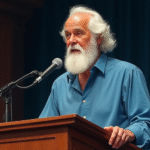Overview of Digital Sentiment During Mexico’s 2025 Patriotic Celebrations
In 2025, Mexico’s patriotic sentiment during its national celebrations was predominantly positive in the digital realm, though tinged with skepticism towards politics and official events. An analysis by Dinamic of over 106,323 mentions on platforms such as X, Facebook, TikTok, YouTube, and Instagram from September 1 to 19 revealed that 80.01% of individuals expressed pride and affection for their country’s identity.
Key Themes in Digital Conversations
- Positive Expressions: Central narratives included “¡Viva México!” (12.40%), admiration for the flag “ondear con orgullo” (11.75%), and recognition of “héroes que nos dieron patria” (5.85%).
- Critical Voices: 10.39% of interactions displayed a critical tone, questioning the politicization of events and labeling them as “purely political shows” (7.80%) or excessive nationalism (2.70%) that distracts from fundamental issues.
- Nostalgic or Indifferent Voices: 9.60% expressed nostalgia for past celebrations (“Antes era mejor”, 4.75%) or indifference (“lo mismo de siempre”, 3.20%).
Culinary Traditions: A Unifying Force
Mexican cuisine played a crucial role in the celebrations, described as a “motor of unity, tradition, and collective memory.”
- Pozole: This dish garnered the most mentions (27.54%), sparking friendly yet passionate debates about its red or green variants.
- Tamales and Chiles en Nogada: These dishes were linked to regional pride and large-scale events.
- Mole: Described as a dish that “tastes like home” and fosters family unity.
- Street Food: Esquites and taquizas had notable presence, reflecting local commerce activity in plazas and neighborhoods.
The dominant narrative was “la pachanga en casa” (21.35%), confirming that the home remains the primary space for reinforcing national identity.
Puente Vacacional: Tourism, Rest, and Challenges
The extended holiday period generated over 8,599 mentions and became an opportunity for domestic tourism, boosting local economies in various destinations.
- Anticipatory Planning: 18.25% of users planned their time off to make the most of the days.
- Preferred Destinations: Short trips to cultural destinations (14.05%) and Pueblos Mágicos (11.30%) were popular choices.
- Economic Impact: Local businesses experienced increased sales and hotel occupancy (13.47%) due to this mobility.
- Innovative Gastronomy: Unique culinary offerings (9.15%) were another draw, with growing digitalization in the sector highlighted by 4.10% of mentions emphasizing mobile app usage for reservations.
- Concerns and Opportunities: Despite economic dynamism, traffic congestion (5.92%) and persistent security concerns (2.48%) in certain destinations were noted, indicating areas for improvement in planning and management by authorities.
- Staying at Home: Many families (5.25%) chose to “make patria en casa,” prioritizing rest (6.30%) and togetherness (2.16%) over travel.
Key Questions and Answers
- What was the overall sentiment during Mexico’s 2025 patriotic celebrations? The digital conversation showed a predominantly positive sentiment towards Mexican identity, gastronomy, and family gatherings. However, there were criticisms regarding the politicization of official events, lack of planning in transportation, and security concerns in some destinations.
- How did Mexican cuisine contribute to the celebrations? Culinary traditions, especially pozole, tamales, chiles en nogada, and mole, symbolized Mexican identity and strengthened family bonds. Street food options like esquites and taquizas also reflected local commerce activity.
- What were the main themes in discussions about the extended holiday period? The period was seen as a chance for domestic tourism, with users planning short trips to cultural and magical destinations. This mobility boosted local economies, though traffic congestion and security concerns were noted.






